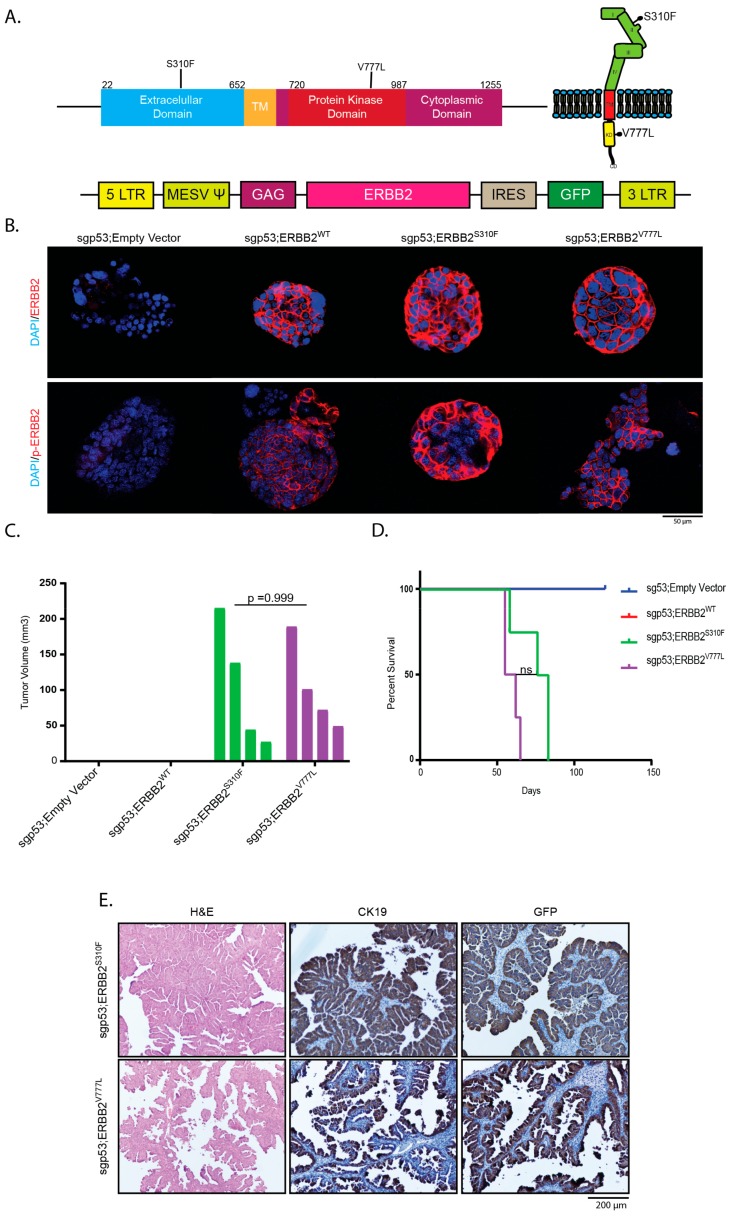Figure 4.
Mutant ERBB2 cooperates with loss of p53 and leads to papillary GBC in recipient mice. (A) Top: Schematic of human ERBB2, indicating the location of two point mutants (S310F and V777L). Bottom: retroviral vector used to transduce organoids, that had been treated with an sgp53-containing plasmid (px459) to induce loss of p53. (B) Immunofluorescence for ERBB2 (top) and phospho-ERBB2 (bottom) on organoids harboring the indicated genetic alterations. (C) Tumor volumes 36 days after s.c. implantation of the respective organoids into recipient mice. All mice transplanted with sgp53;ERBB2S310F- and sgp53;ERBB2V777L organoids exhibited tumor development, whereas sgp53;empty vector- and sgp53;ERBB2wildtype organoids did not give rise to tumors over a four-month observation period. There was no significant difference in the tumor burden of mice transplanted with sgp53;ERBB2S310F- and sgp53;ERBB2V777L organoids (p = 0.999). (D) Mice transplanted with sgp53;ERBB2S310F- and sgp53;ERBB2V777L organoids reached endpoint criteria with a median survival of 79.5 days and 58.5 days, respectively. (E) H&E and IHC for CK19 and EGFP on tumors generated with sgp53;ERBB2S310- and sgp53;ERBB2V777L organoids.

